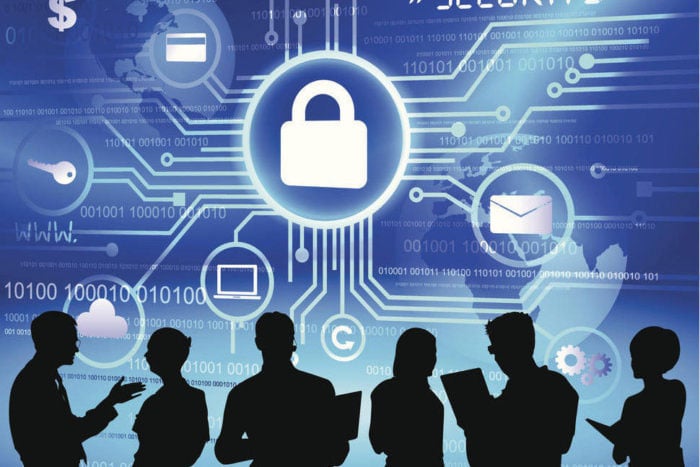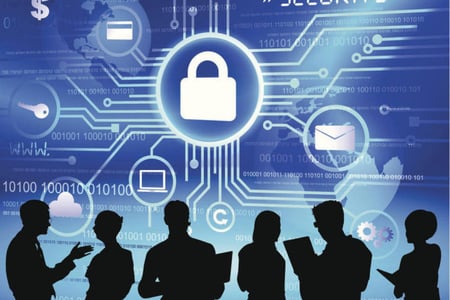

Cybersecurity is a vital concern for businesses today. While in the past, most companies only needed a physical security team, in the current technology-driven world, they now need much more. Today, an inadequate cybersecurity team could quickly put an organization’s assets at risk without the criminals even having to set foot on the business’s premises. Effective cybersecurity teams have the potential to protect business assets and stay one step ahead of cybercriminals.
Building and managing an effective cybersecurity team isn’t easy. The team members must be able to work side-by-side on often-stressful and complex projects that can affect the whole organization. A resilient, efficient, and knowledgeable cybersecurity team may be a challenge to put together, but when you do, the team will be highly effective.
Building a Successful Cybersecurity Team
Successful cybersecurity teams require proactive action and can be built from scratch, or existing teams can be reconfigured to be more beneficial and effective to your company. Of course, technical skills are important. Fortunately, with an existing team, you will have a good idea of each professional’s current levels of proficiency. Professional certifications are a great way to determine potential team members’ proficiency for those who are building from the bottom up. Technical ability isn’t the only aspect to consider when establishing your team. Here are some other steps to consider that are every bit as important:
Define critical team roles. When starting or reconfiguring a cybersecurity team, the first task is to define the roles you need and develop a clear separation of responsibilities for each. You may already have some of these roles within your team. If that’s the case, make sure that you have properly identified each member’s responsibilities. Consider the following breakdown of roles and responsibilities for your cybersecurity team:
- Security engineering team members are responsible for designing, installing, configuring, and operating security hardware and software, as well as hardening systems and applying patches.
- Red team members proactively audit and execute penetration testing of systems. They simulate sophisticated internal and external adversaries to uncover weaknesses and test defenses.
- Blue team members monitor, respond to, investigate, and analyze security incidents. This group works closely with the engineering team, undertaking defensive roles while using the red team’s input.
- The management team oversees the other teams and defines strategic goals for the whole team according to the needs and goals of the organization. This means they are responsible for creating security policies, training plans, hiring plans, performance reviews, and budgeting.
Identify training and career paths. You must invest in the career development of cybersecurity team members. That involves identifying training paths that will allow your team to stay updated on the latest threats, tools, and techniques. Cyber threats are complex and constantly changing, -- so your team needs to keep their skills up to date.
Identifying development plans for your staff will help attract and retain the best cybersecurity talent. You are more likely to keep your best people when you make it clear that their future matters to you. Many cybersecurity professionals believe ongoing professional learning is key to building their careers. In fact, in a study from (ISC)2, 88 percent of respondents said they want to work for employers who invest in training and certifications.
Look internally first. Don’t be quick to put an ad out for new cybersecurity employees. Instead, take a close look at internal options. Current employees are often underutilized and underrated assets for new job opportunities. Incorporating existing team members into your new structure can look very different for individual employees. Some may fit well into the role they are currently in, while others may be more suited for other roles on the team. Some existing team members may require additional training to update or refresh their skills, while still others may want to look at opportunities within the organizations that are outside of the cybersecurity team. Additionally, there may be employees from other departments who want to transition into cybersecurity. These workers already know and like the company culture and could be great fits for your cybersecurity team. Be sure to exhaust all of your internal options before moving on to external candidates.
Pay attention to nontechnical skills. The most successful cybersecurity teams are made up of team members with diverse backgrounds and skill sets. You need people who think differently to best address the complexities of cyber threats and attacks. Look for professionals who have capabilities beyond the technical -- skills such as critical and analytical thinking, problem-solving, creativity, and the ability to work independently and as part of a team are all critical.
With a diverse team, you won’t end up with group think. Instead, members can bring different ideas to the table, which is essential when dealing with dynamic cybersecurity threats.
Ensure the mission is clear. Developing and communicating a clear organizational culture and purpose drives employees together toward a common goal. Cybersecurity team leaders should foster the same within their teams by focusing on the company’s mission and objectives. Keeping cybersecurity team members in the loop improves working relationships with other departments and management. It ensures that everyone is working toward the same organizational goals.
Think ahead. Finally, it’s important to think long-term. You have to be patient when building an effective and resilient cybersecurity team. Creating a team that looks great on paper and works well together may take some trial and error.
Once Your Team Is In Place
There are several tasks to keep in mind once you have assembled your team in order to maintain their maximum efficiency and effectiveness. Talented security professionals want to work for organizations that will help them improve and enhance their skills to advance their careers. As a result, creating a supportive and motivating environment is essential. Here are some examples that will help you keep your security team motivated and working effectively:
Know your team members’ goals. Do you know which cybersecurity roles your team members are working toward? Is there a career path they should be following? Do they need additional training or certifications to achieve their career goals? Answering these questions requires communication. Communication is a vital aspect of an effective team. It’s important to communicate regularly with your staff, not just about daily operations but also about their long-term aspirations and goals. Such support shows you value each team member and will lead to increased loyalty and productivity. Have one-on-one meetings during which you can have employees outline their potential career paths within your company. This helps them visualize their professional development within the organization and lets you know how to best support them as they move along their chosen paths.
Encourage employee mentoring. If your company doesn’t already have a mentoring program, get one started. It may be one of the most supportive and motivating things you do for your team. Mentoring can be done within the organization as a whole or within your team. Usually, a seasoned, more-experienced team member shares insights and knowledge with a less-experienced employee in a mentoring program. In the IT department, this may look like a more experienced individual helping another employee prepare for professional certification exams, promotions, and the like.
Although it’s fairly obvious that the junior employee will benefit from the mentor’s experience, the mentor also benefits from the relationship. As they guide their junior colleagues, they can learn the fresh ideas, innovative thinking, and technological knowledge their mentees bring to the table.
Recognize accomplishments. Providing feedback, especially positive feedback, is essential to motivating cybersecurity team members. It helps them develop confidence and feel appreciated, demonstrating that the organization knows the excellent work team members are performing. You don’t have to simply stick to annual performance reviews. Get used to recognizing your valuable team members when a project is successfully completed, when a team member earns a new certification or promotion, when a breach is prevented, or in any other situations that are worthy of your praise and recognition.
Encourage attendance at industry training, conferences, exhibitions, and workshops. If your budget allows, it’s also a great idea to pay for certification classes and examinations for your team members. As mentioned above, cybersecurity employees want to work for companies that make training a priority. It’s also important for organizations to encourage cybersecurity professionals to attend industry conferences, exhibitions, and workshops. Every year, there are hundreds of these types of events all over the world that cover all aspects of cybersecurity, from ethical hacking to cloud computing to new trends and innovations. Attendees will learn all the latest information about topical cybersecurity subjects and be able to apply it in their workplaces. It’s a win-win for the employee and the organization.
Final Thoughts
Organizations of every size are vulnerable to cybercriminals. That’s why it’s crucial to assemble a cybersecurity team that effectively protects your business’s information and assets. Following the above suggestions for building and motivating your team will help ensure that when cyber threats and attacks are imminent, the professionals you’ve hired will mitigate the situations in the best possible way.
Leave Your Comment Here